As part of our invasive plant monitoring this summer, the stewardship crew visited the bog of Fox Nature Preserve. To reach the center of the bog we traversed a challenging, muddy route through towering nonnative cattails. As I followed my fellow crew members into the bog of beauty, I suddenly found myself in a pickle as my muck boots sank into the fragile ground in the outer shallow “moat” of the bog. In my miserable attempt to escape its mucky grasp, I heard a loud swoosh as my boots began to fill with water!
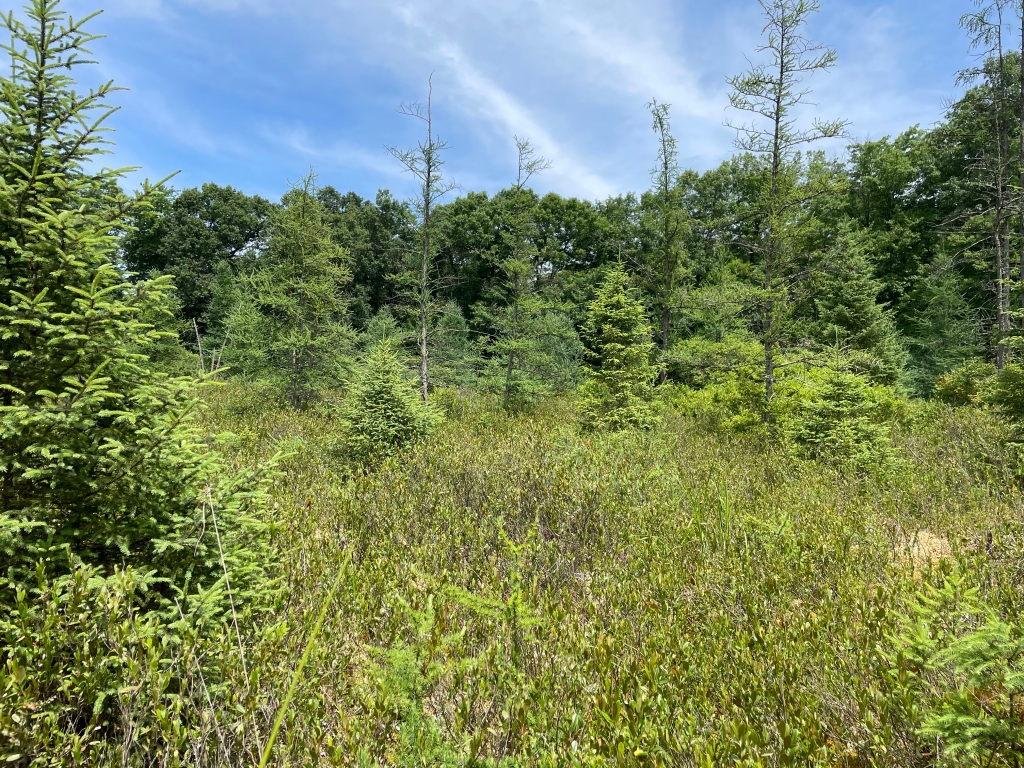
I managed to climb my way out to more “stable” ground, stepping on nonnative cattails. Unfortunately, my boots weren’t so lucky. But Stewardship Specialist Grant Vander Laan came to my aid, freeing my muck boots from the ground’s intense grip! Thanks to his help, and after crawling under blueberry bushes, I was able to step foot in a bog for the very first time. The privilege of experiencing a bog ignited enthusiasm in my soul!
Please enjoy don’t walk out into the Fox Nature Preserve bog. We are near the range limit of bogs in southern Michigan, and many of the unique plants are already struggling to hang on. The sphagnum moss blanket is very fragile, and it can be dangerous walking.
What are Bogs?
Bogs are unique freshwater wetlands that are acidic, nutrient-poor peatlands. Sphagnum moss and “ericaceous” shrubs, like the leatherleaf in the photo above, are important plants in bogs. Bogs are mainly found in northern, cool climates, since that is were precipitation is often greater than evaporation. Bogs mostly obtain their water from precipitation. Due to the harsh, acidic conditions, a limited, set of extraordinary plants and animals live in bogs.
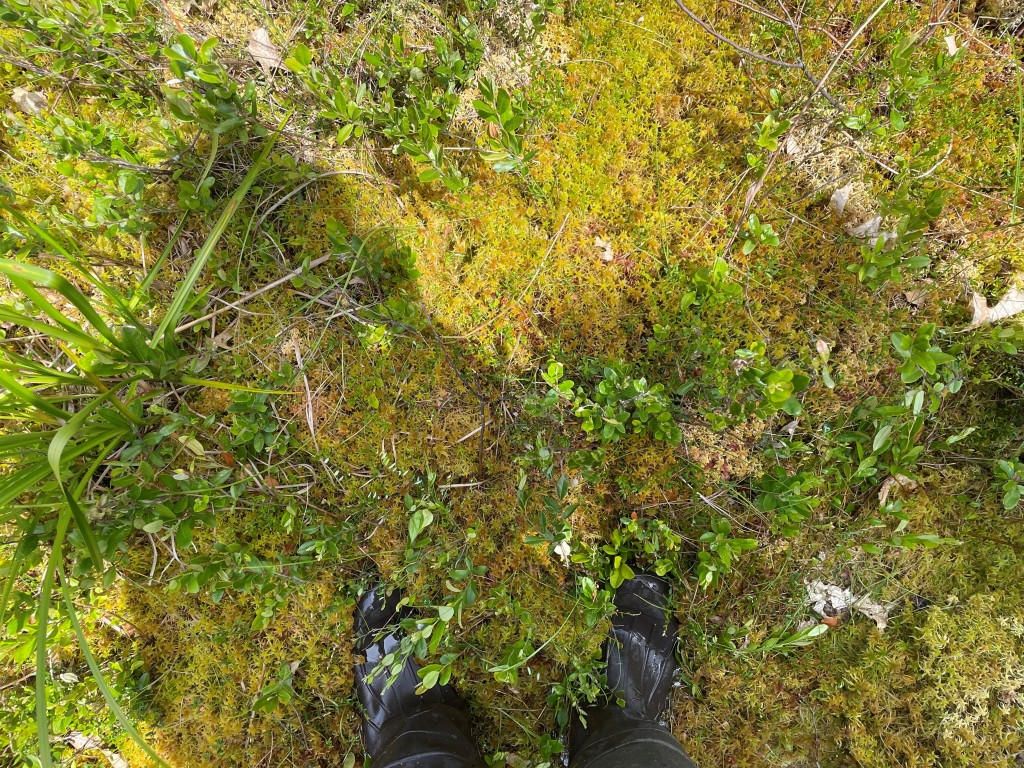
The Blanket of Peat Moss
As I regained my footing after loosing my boots and crawling through blueberries, I was blown away by the bog’s peculiar appearance. The ground was a blanket of sphagnum moss, spongy but durable. I could feel the water beneath me, swaying by the command of my foot’s movement. Unique plants were found nestled in the moss blanket; tamarack and black spruce trees dotted the bog.
As mentioned previously, bogs are covered in sphagnum moss, a plant that makes the bog ecosystem possible. According to Milne Library, sphagnum moss heavily influences an ecosystem as it makes areas acidic, nutrient-poor and filled with water. Sphagnum moss and carnivorous plants such as sundews and pitcher plants thrive in these conditions because competitors find these conditions unfavorable.
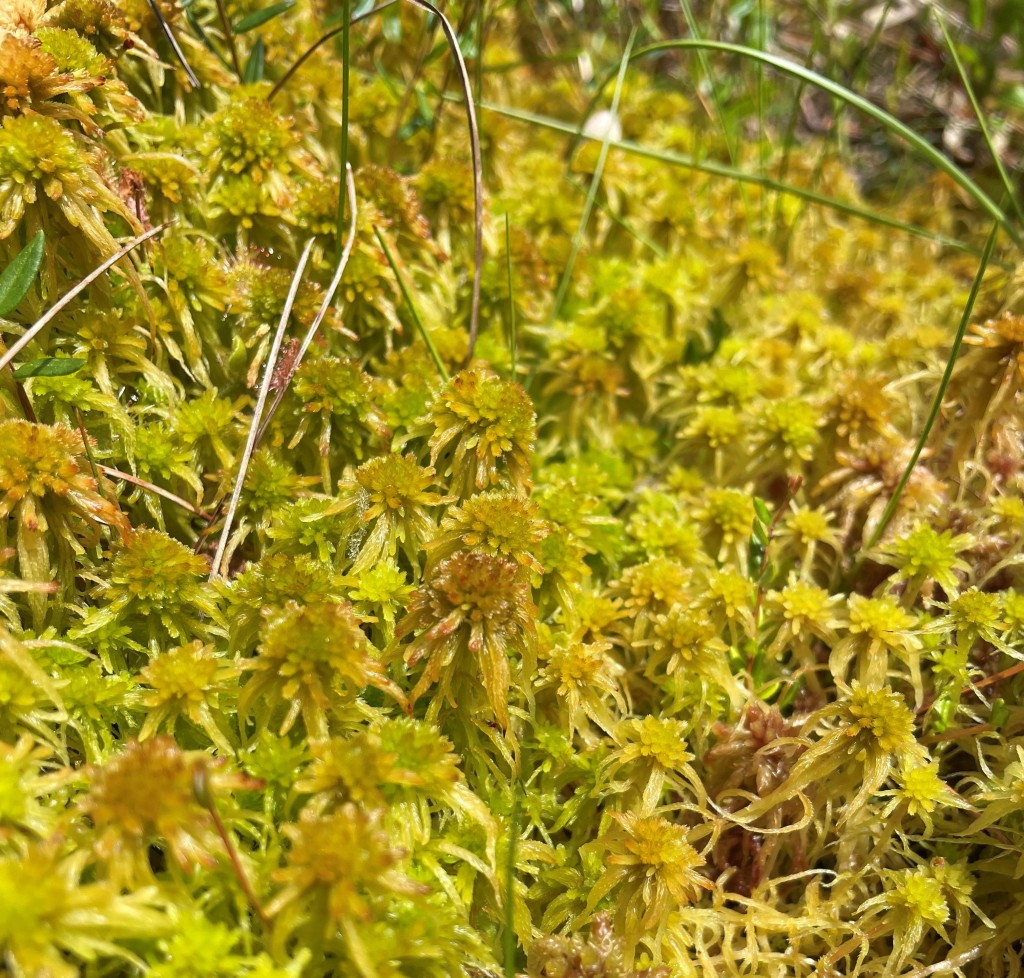
Pitcher plants (Sarracenia purpurea) are a symbol of survival in low-nutrient conditions. These plants eat insects to compensate for the lack of nutrients from bogs. According to the Irish Peatland Conservation Council, the insects on the pitcher plants’ menu include spiders, flies, midges, and beetles. Pitcher plants lure them to the pitchers with their meat-like patterns and their nectar’s aroma. Once in the pitcher the insect is trapped by the sticky nectar and unique hairs that keep them from crawling out. Digestive enzymes allow the pitcher plant to break down the insect as a satisfactory meal.
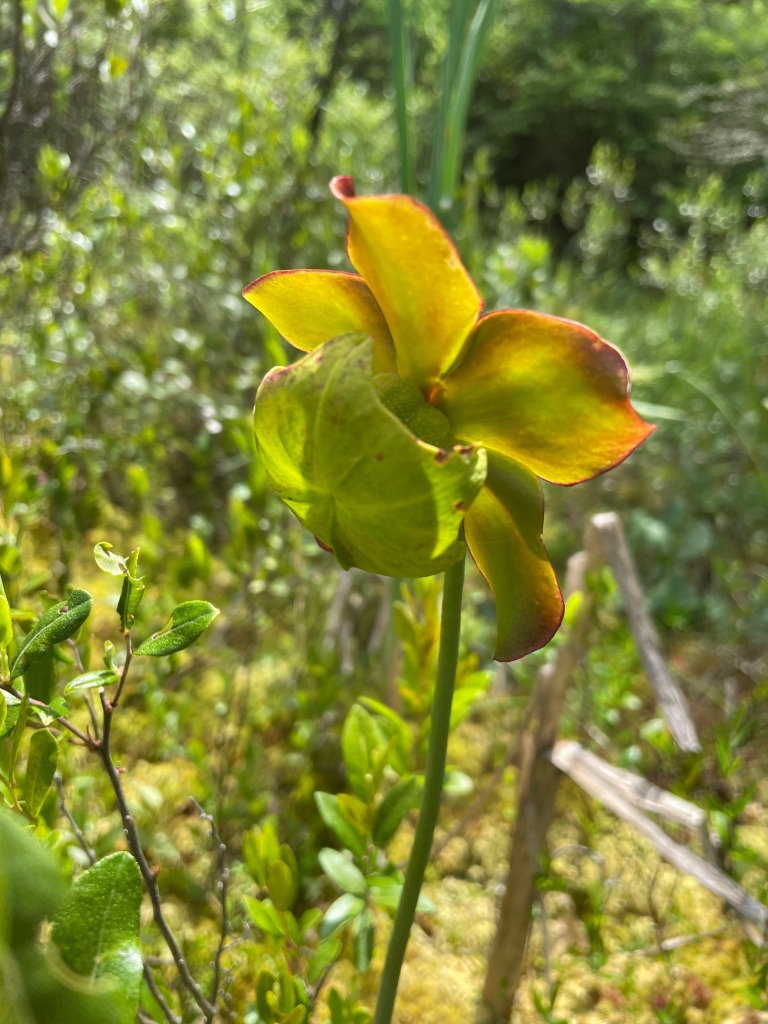
Trees can also be found in bogs! The bog at Fox Nature Preserve includes tamarack trees, black spruce, and white pine. Tamarack trees are a common tree found in bogs since they can tolerate the acidic soils. Tamaracks are a unique member of the conifer family because they are deciduous, meaning they are one of the few to lose their needles in the fall! Look for the beautiful golden hues of tamarack in wetlands this fall.
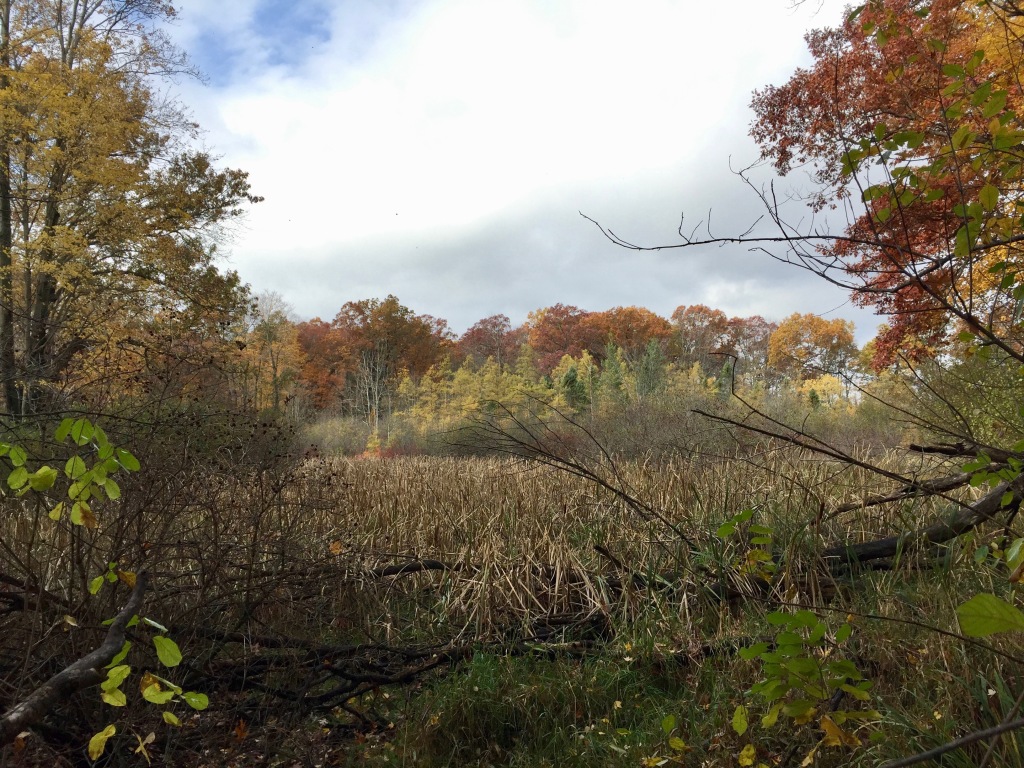
Bogs can appear to be an uneventful ecosystem, but they are important habitat for many animals. According to National Geographic, amphibians thrive in insect-rich bogs. And according to Michigan Natural Features Inventory, swamp sparrows and song sparrows can be found in bogs. These sparrows typically nest throughout Michigan, then most move a bit south during the winter to find food and better habitat during the cold months.
The Life Lesson from Bogs
Life can be full of seemingly unfavorable conditions, just like a bog. Your car might break down, you might be tired studying for classes, you and a friend might be fighting, or you might feel unfulfilled in life. In some cases, enduring unfavorable conditions can lead to great reward. Like a patient pitcher plant patiently bubbling up a fly stew to get scarce nutrients, your sleepless nights of studying can reward you with an excellent exam score. However, some unfavorable conditions make it necessary to change something in life. Maybe there comes a point where you need to uproot your life and relocate, like a swamp sparrow traveling for food. Sometimes in life we must be a pitcher plant, and sometimes we have to be a swamp sparrow. There is nothing wrong with being either to navigate the unfavorable conditions life may send our way. Life can be like a bog sometimes, and considering how amazing bogs are, sometimes that’s not so bad.